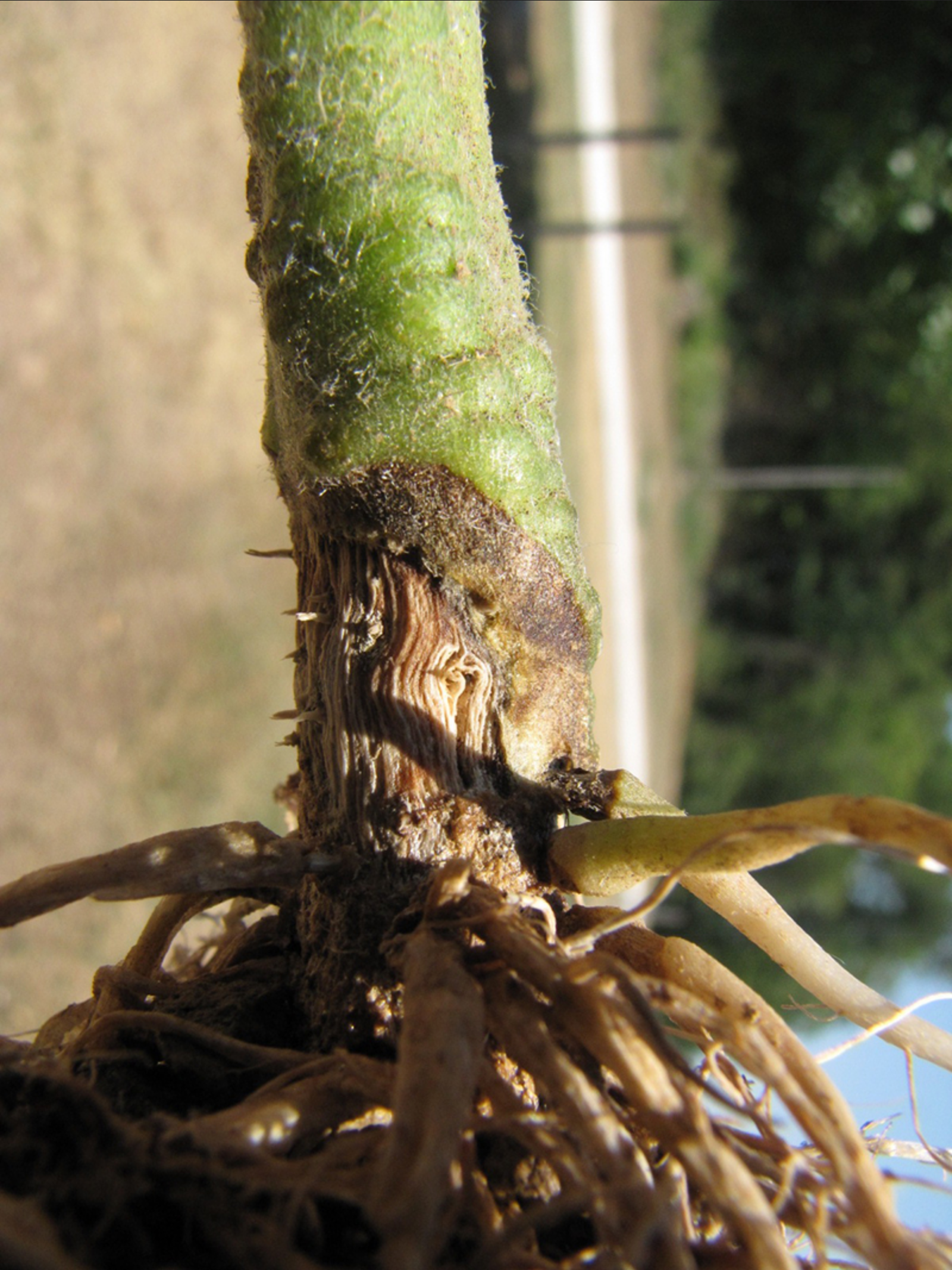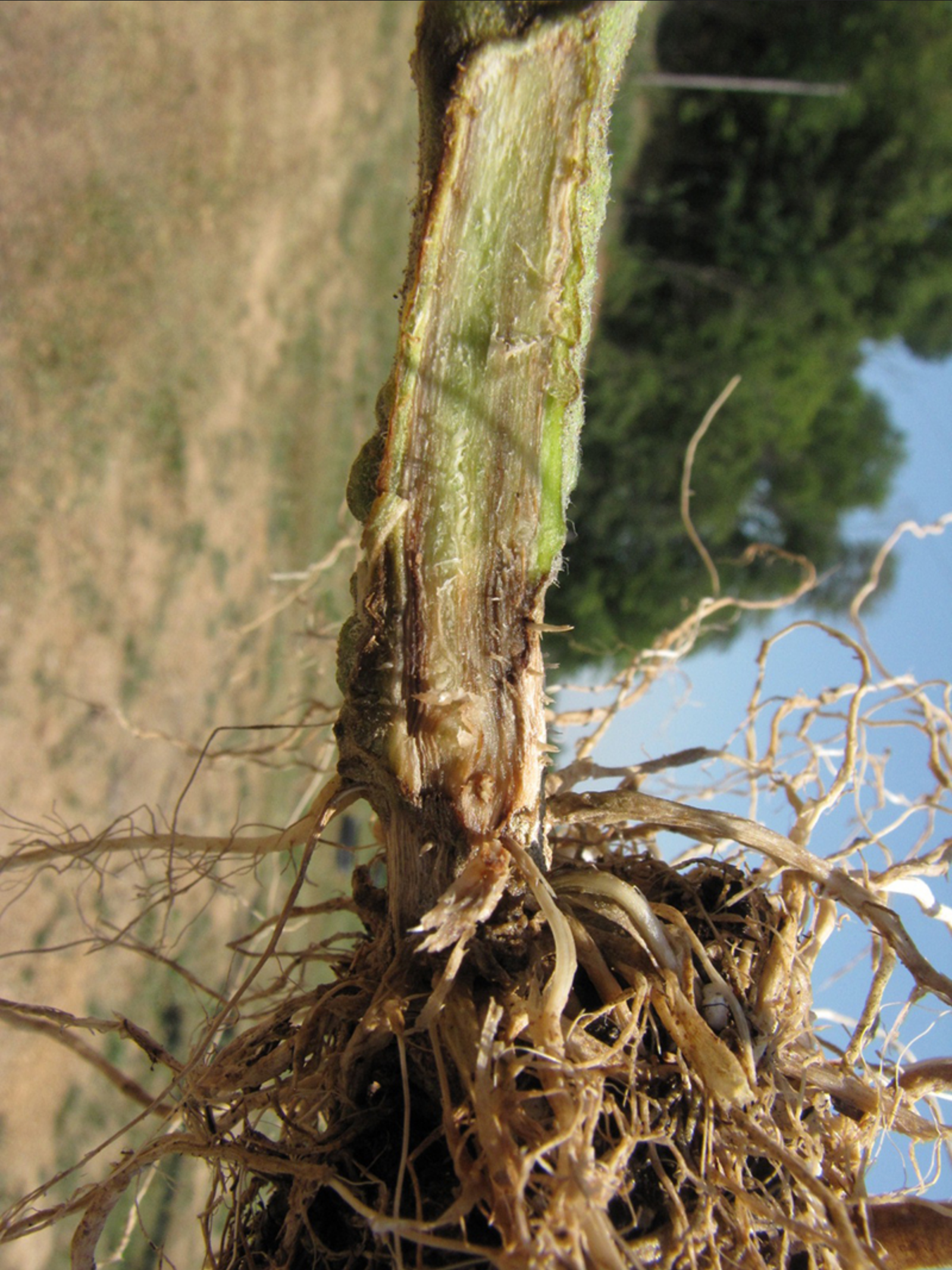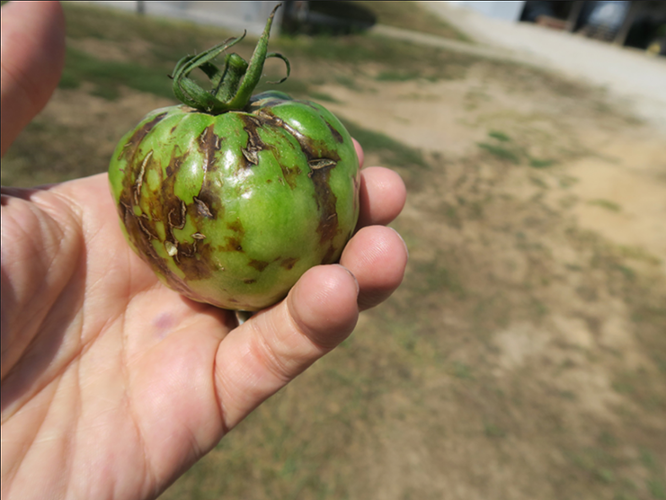Fusarium Crown and Root Rot of Tomato
May 2, 2022
Dan Egel, Extension Plant Pathologist, Southwest Purdue Agricultural Center
While many of us wait for the first frost-free date to place our tomato plants outside, some folks are already producing tomatoes in greenhouses to get a jump on the season. The photos shown here, however, are of a greenhouse tomato plant that will not produce any tomatoes this season.
Figure 1 shows a wilted tomato plant in a greenhouse. The reason the plant is wilting can be understood by looking at Figure 2. There is a lesion at the base of the stem that is girdling the tomato plant. If the stem of the plant is cut open, the water conducting or vascular tissue inside the stem has been discolored brown an inch or two (Figure 3). These are all symptoms of the disease Fusarium crown rot and root rot of tomato (FCR). I was able to confirm this disease by isolations conducted in the laboratory.
Click images to enlarge
The fungus that causes FCR survives well in the soil in the absence of a host plant. Therefore, tomatoes planted in soil infested with the FCR fungus may become diseased even after several years of a rotation to crops unrelated to tomato. Some tomato varieties have resistance to FCR. However, most of the tomato varieties with resistance to FCR are the indeterminate type often grown in greenhouses as opposed to the staked determinate types that are often grown in gardens. Tomatoes may be grafted onto rootstocks resistant to FCR as discussed here.
There may be many reasons why tomato plants may wilt. Use the photos here to help determine if your wilted tomato plants are affected by FCR. Plants may be submitted to the Purdue Plant and Pest Diagnostic Laboratory for identification of plant problems.





